Archive
Size That Matters
 I think we all agree that fairness should be uphold in any attempts to reveal historical facts. It goes the same with Radio Malabar that was said by cdvandt.org as “Worlds most powerful arc transmitter ever”. I kinda turn that someway for the tag of this site: “digital archeology of the biggest transmitter ever”. Now, the question is: was it really that powerful ? that big ? I have read two books on the history of Wireless Communication (I am going to mention the titles on the next entry of this site) and there’s no mention whatsoever about Radio Malabar. I browse through and search using Malabar, Dutch Indies, Netherland, Indonesia, de Groot, etc: all come with no result. Has Radio Malabar been ignored in the history of wireless communication ?
I think we all agree that fairness should be uphold in any attempts to reveal historical facts. It goes the same with Radio Malabar that was said by cdvandt.org as “Worlds most powerful arc transmitter ever”. I kinda turn that someway for the tag of this site: “digital archeology of the biggest transmitter ever”. Now, the question is: was it really that powerful ? that big ? I have read two books on the history of Wireless Communication (I am going to mention the titles on the next entry of this site) and there’s no mention whatsoever about Radio Malabar. I browse through and search using Malabar, Dutch Indies, Netherland, Indonesia, de Groot, etc: all come with no result. Has Radio Malabar been ignored in the history of wireless communication ?
Perhaps it’s gonna take more than just two books to answer the question. However it is imperative for me now to reveal anything matters with its size. I could have been straight with the data, but since the source is in Dutch, my chance is only by using Google Translate which more than often resulting nothing but gibberish. So, what I do is to present the original text I got from this site. OK, I could just make a guess from the English translation, but for the sake of accuracy I would just leave it original. I wish someone with fluency in Dutch could translate it … :(
—
Het idee van een rechtstreekse verbinding tussen het voormalig Nederlandsch Oost-Indië en het Moe- derland is in 1916 ontstaan in de vorm van een dissertatie van Ingenieur de Groot. De eerste luister- proeven vonden plaats met geleende Telefunken-ontvangers. Na bevredigende resultaten bij de ont- vangst van verschillende Europese en Amerikaanse zenders werden besprekingen gevoerd over geschikte frequenties en zendvermogens. Teneinde meer gegevens te verzamelen begon men met proefuitzendingen met een 100 kW Poulsen-Vonkenzender van de Federal Telegraph Company enmet een provisorische antenne aan een ballon bevestigd. Het bleek dat de resultaten echter niet bevre- digend waren, zodat dr. De Groot – die met de onderzoekingen belast was – een reusachtige kloof in het bergmassief uitkoos van de Goenoeng Malabar met 2 berguitlopers als natuurlijke ophangpunten voor zijn antenne. Als stroombron diende de enige reserve-dynamo van de Bataviasche Tramweg My (beschikbaar gesteld door OM v.d. Horst, redactie PK-jaarboek ’82); aangedreven door een 125 pK sterke vliegtuigmotor van de Militaire Aeronautische Dienst.
Dr. De Groot had inmiddels een gigantische vonkzender van 2400 kW vermogen geconstrueerd. Al- leen al het gewicht van de magneten bedroeg meer dan 180 ton, het spoelenmateriaal ongeveer 20 ton. Een groot koelwaterbekken voor het hoofdgebouw in de kloof diende voor afvoer van de warmte. De voor de zender benodigde waterstof werd in elektrolytische waterstofgeneratoren gemaakt. De zendfrequentie was 15.600 meter; het golfbereik lag tussen 7800 en 18.000 meter. Dit zen- dertype werd in dubbele uitvoering geïnstalleerd en verder met ,,kleinere” zenders aangevuld. Zo werden er nog twee lichtkogelzenders van ieder 200 kW vermogen geplaatst, evenals een Telefunken- machinezender van 400 kW vermogen.
De nieuw geconstrueerde antennes hadden eveneens geweldige afmetingen. De grote langegolf-an- tenne werd door 5 over de kloof gespannen duimse stalen kabels van wel zo’n 2000 meter gedragen. De ophangpunten op de beide uitlopers van de Goenoeng Malabar bevonden zich ongeveer 900 meter boven het station. Vijf door motoren aangedreven lieren aan de zuidzijde, en overeenkomstige toe- standen met tegengewichten aan de noordelijke, dienden tot het constant houden van de trekspanning van 10.000 kg. De eigenlijke antennedraden bestonden uit met koperdraad omwikkeld non-ferro dra- germateriaal van 7/8 duimsterkte. Door het hiermede bereikte grote oppervlak kreeg men te maken met corona-effecten. De bevestiging aan de dragerkabel vond plaats op 700 meter hoogte middels 2 meter lange isolatoren.
Op 5 mei 1923 werd het bedrijf officieel geopend. Desondanks werden niet alle verwachtingen ver- vuld, hoewel naar vele landen kontakten konden worden gelegd.
—
Should there be anyone out there capable of translating the above text in good English, please do that in the comment section (click “leave a comment” of this entry). Thanks!
Mr. Bombeeck: The Last Dutch Soldier of Radio Malabar
 I should have met him, but now it’s too late. When I came to Gunung Puntang (A sub district where RM is located) a week ago, I was told by an officer at the gate that there used to be a Dutch man in wheelchair who came there regulary. Unfortunately, he passed away in December 2011. He wasn’t sure about his name and said it could be ‘Josef’. One thing that crossed my mind was that I could ask some people where ‘Mr. Josef’ lived, see his family (he was married with a local woman), and If I was lucky I could get some infos and photos of him and anything to do with RM.
I should have met him, but now it’s too late. When I came to Gunung Puntang (A sub district where RM is located) a week ago, I was told by an officer at the gate that there used to be a Dutch man in wheelchair who came there regulary. Unfortunately, he passed away in December 2011. He wasn’t sure about his name and said it could be ‘Josef’. One thing that crossed my mind was that I could ask some people where ‘Mr. Josef’ lived, see his family (he was married with a local woman), and If I was lucky I could get some infos and photos of him and anything to do with RM.
I did asking around. A clue was that he lived near a gateway down the road from Gunung Puntang. After some strange bad rapport from ojek drivers (motorbike transportation) in Palalangon, I and two friends who were with me in the trip, were led to a house about a half kilometer away by one of the driver who knew him as ‘Bombek’. Sadly, nobody in the house but the servant. Even the servant (an old woman) didn’t know a thing about Mr. Josef. She said that the lady of the house went out of town.
My search has found a website that contains this :
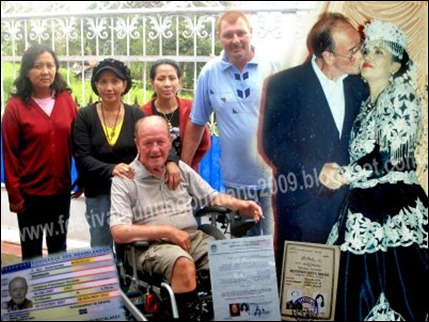 Oh yes. I recognize that white metalwork for the house fence. I believe I have visited the right house back then. Turned out that his name was Josephus Franciscus Nicolass and Bombeeck was his nickname. I feel indebted to the website owner and have sent a message to him thru Facebook.
Oh yes. I recognize that white metalwork for the house fence. I believe I have visited the right house back then. Turned out that his name was Josephus Franciscus Nicolass and Bombeeck was his nickname. I feel indebted to the website owner and have sent a message to him thru Facebook.
The next time I go to Gunung Puntang, I’ll make sure I pay a visit to his family.
General Description of RM
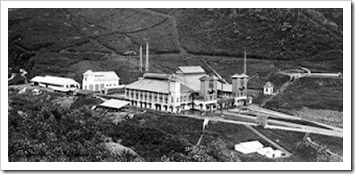 For the time being, I don’t like to make duplication of any content on RM in Internet, be it in different wording. That is with the exeption of photos and documents later in the future. Even when I put them here, I am gonna make sure that they would not just be like copy and paste without anything said about them. My reason is, I could not rely on their existence here in the virtual world. “A World of Wireless – Virtual Radio Museum” is one example. It is said to be officially closed in 2010.
For the time being, I don’t like to make duplication of any content on RM in Internet, be it in different wording. That is with the exeption of photos and documents later in the future. Even when I put them here, I am gonna make sure that they would not just be like copy and paste without anything said about them. My reason is, I could not rely on their existence here in the virtual world. “A World of Wireless – Virtual Radio Museum” is one example. It is said to be officially closed in 2010.
So for the sake of general description of what RM is, I would point to these external links. As posting entries would stack this down to nowhere, I will copy them to the side bar. Some of them are :
-
http://en.wikipedia.org/wiki/Malabar,_Indonesia
It’s almost always a sure place to start, but it has some innacuracy. It said nothing about Arc Poulsen as the first gear. -
http://www.cdvandt.org/dijkstra_-_malabar.htm
A website on Klaas Dijkstra’s archive that has been put into a book. Dijkstra was an engineer who help Dr. de Groot when RM was first developed with Arc Poulsen transmitter. -
http://bit.ly/H0t0QU
Pointers of RM Location on Google Maps and the surrounding location of interests. -
http://commons.wikimedia.org/wiki/Category:Malabar_radio_station
Picture collection of RM from Tropen Museum. I feel like commenting on each of the picture here later.
The rest of what available in Internet are mostly in Bahasa Indonesia. However, most of them are not original, in that from one site to another are almost the same content wise, or simply personal accounts on the trip to RM location. That is part my reason to do all this in English, while in doing so try to compile any available information in one place.

Anniversary Countdown
About This Blogsite
This site is intended to be a place to compile everything about Radio Malabar: a Dutch Radio Station during its occupation in Indonesia. The station was also the first to make intercontinental, wireless contact albeit the technology at the time that made it to afford anything huge in proportion. Even said that the transmitter, receiver, and power supply are in different location. Founded by Dr. Ir. C. J. de Groot and officially opened in 5 May 1923, what is left now is its' ruins. Nevertheless, it is a monument of human effort to communicate over very long distance.
Recent Posts
- The 95th: My Story of The D-Day (5)
- The 95th: My Story of The D-Day (4)
- The 95th: My Story of The D-Day (3)
- The 95th: My Story of The D-Day (2)
- The 95th: My Story of The D-Day (1)
- Trying Out The Digi Modes
- The 95th Commemoration!
- RIP YD1DDB (Edwin Agustiana)
- An Article in Old Danish Publication
- Our T-Shirt in The Netherland
- A Picture of The Crowd
- Videos of Our Own
- Another Video on What Happened in Kootwijk
- The First Youtube Video on Kootwijk
- Day 3: The D Day – The Sacred Moments
- Day 2: Propagation Does Matter
- Day 1: Setting Up for The Special Call
- A Visit to The Netherland Embassy in Jakarta
- In The Waiting State of Everything
- A Real Archeology is Not Impossible
Categories
- 90th Commemoration (12)
- 95th Commemoration (7)
- Analysis (4)
- External Link(s) (2)
- Photos & Comment (3)
- Related Trivialities (9)
- Supporting Infos (5)
- Uncategorized (3)
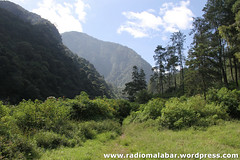

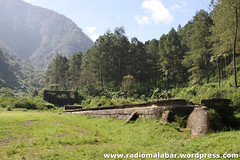

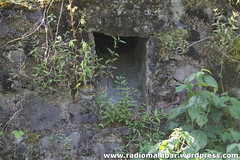
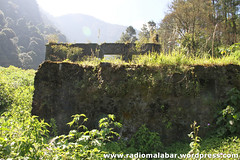



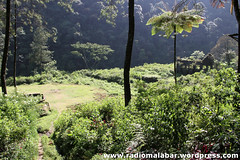
Flickr Photostream
Radio Malabar, a set on Flickr.
There are other photos of RM that are not kept by Tropen Museum but I am not sure about their term of use. For now at least I will explicitly mention their origin when I use them. I do hope that there will never be an issue of copyright here. Beside, I created this site not in any way for commercial intention.
Share this: